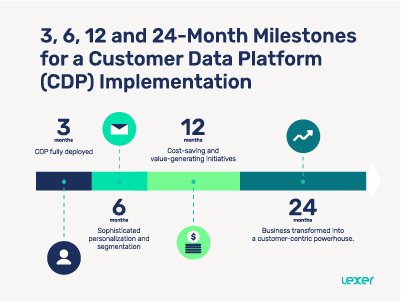Adopting an Omnichannel Marketing Strategy for Better ROI
June 7, 2021The relationship between brands and consumers in today’s digital world has shifted. In the past, brands could easily define the message and pre-determine the pathway of the customer’s journey. However, with consumers’ embrace of multiple devices (mobile, email, web, POS etc) as interaction points, the journey is now a multi-dimensional, multi-platform customer journey. This means that customers can appear at any time online (on the web) or offline (on mobile via SMS or USSD) – the path to conversion is now completely owned by the customer.
Interestingly, amidst this multiplicity of devices and platforms, the consumer also wants a seamless personalized experience across all platforms and devices. He doesn’t want to interact with an Advert via SMS and still gets bombarded with that same Advert when he logs into his Facebook account on the web. This is where Omnichannel Marketing becomes important.
The use of various channels to create one, unified experience for your customers is what is referred to as Omnichannel Marketing. This includes both traditional and digital channels, point-of-sale, in-store, and online experiences. It involves the creation of a seamless message that adjusts to your customer based on their behaviour through your sales funnel, providing the ultimate personalized customer experience. According to Forbes, “brands with superior customer experience bring in 5.7 times more revenue than competitors that lag in customer experience. In fact, 86% of buyers will pay more for a great customer experience.”
It is easy to confuse “Omnichannel marketing” with “Multichannel marketing.” While multichannel marketing starts with the company and moves outwards to the different channels, omnichannel marketing starts with the consumer and interacts between channels for a seamless experience. By this simple explanation, the fact that Brands will spend far less and get better performance on their Ad Spends adopting an omnichannel marketing strategy versus a multichannel marketing strategy is evident.
Omnichannel marketing pulls the customer into the centre of the strategy, and the channels that the customer uses to engage with the brand not only have a unified message, but that message adapts to each touchpoint a customer has with the brand. This means that the messages the customer sees, regardless of the channel, will update once the customer has taken the desired action.
For instance, with omnichannel marketing, a bank customer who started an account opening session via his mobile, but drops off and later logs into his Facebook account, should see an ad reminding him to continue with the account opening, from where he stopped rather than being targeted as a new lead. This will guarantee a top-notch customer experience and reduce cost on ad spend.
With the level of personalisation that omnichannel marketing offers, more savvy Brands invest in technology tools and software such as a Customer Data Platform (CDP) to achieve this. According to a PwC report, the number of companies that invest in omnichannel marketing has jumped from 20% to more than 80% since 2020.
The Terragon Customer Data Platform (CDP) is one of such powerful tools that several multinational FMCG Brands and top tier Banks have invested in to get ahead of the curve in superior omnichannel customer experience. With online (web) and offline (mobile) activation channels, Brands can reach their customers intelligently via email, SMS on their mobile phones to their Facebook via the Facebook Conversions API.-With strategic partnerships with major Telcos, publishers, digital Platforms, Ad exchanges to enable reach via mobile, web, email and most recently a direct Server-to-Server integration to Facebook as the only African-founded CDP partner for the Facebook Conversions API in Africa; the Terragon CDP is uniquely structured to help Brands execute an effective omnichannel marketing strategy and ultimately make better returns on their Ad Spend.
The Terragon CDP also helps Brands to understand their customers by aggregating their customers’ first-party data from various sources, enriching it with data sourced from various third party data supply-side partners and then giving a 360-degree view of customers. With well modelled Machine learning and Artificial Intelligence, the CDP is able to segment these customers according to various data points (demographic, geographic, behavioural and psychographics etc) and allows Brands to activate campaigns via various channels – mobile (SMS and USSD), email, web and social media (Facebook).
With continuous ingestion of data and Machine learning analytics by the CDP, Brands can tell exactly where each customer is on the sales conversion journey/funnel to allow for tailored adverts specific to each customer, based on their unique journey till they convert. This as well as the feedback loop capability (post-campaign), provides Brands with continuous updates for data enrichment and a better understanding of their customers, in order to know the most effective way to reach them. For instance, a consumer Brand may choose to reach a millennial via social media advert, a middle-aged white-collar worker via email and an artisan via SMS to promote the same stable product. As the Customer continues to evolve over time, these channel preferences may change and these updates can be detected via the CDP.
In today’s world where there’s a lot of attention on data privacy, customers are increasingly wary of how much information brands have about them and how frequently brands are able to reach them. This is a legitimate concern that the Terragon CDP caters to by adopting the strictest of data privacy and governance measures.
To activate omnichannel marketing, send an email to marketing@terragonltd.com.


